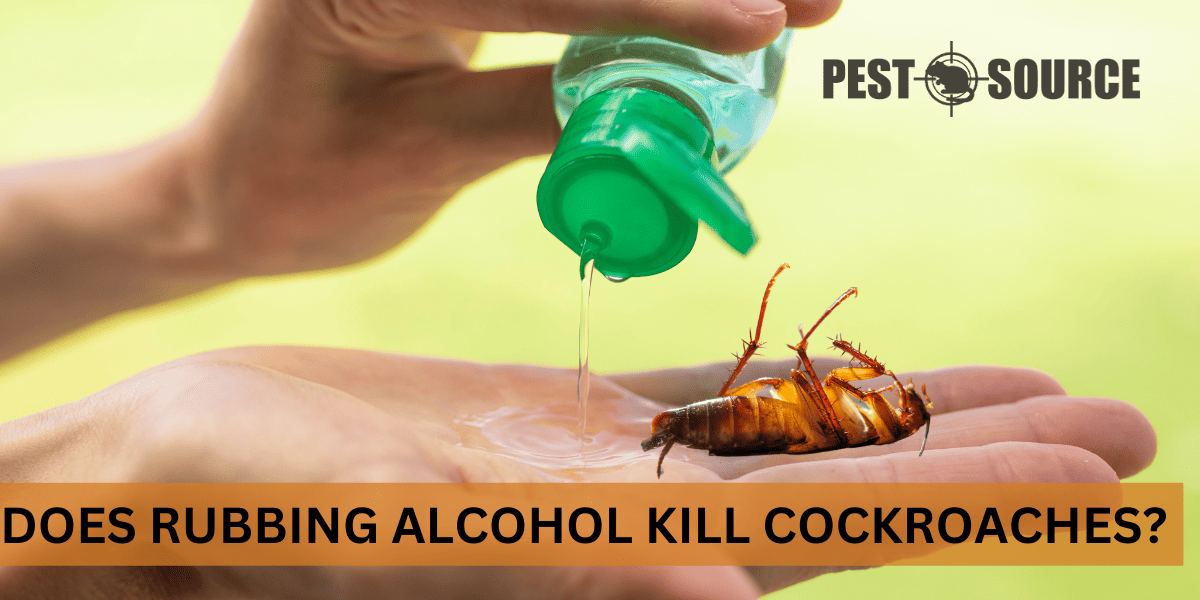Rubbing alcohol can kill cockroaches on contact by dehydrating them, but it’s not effective as a long-term solution. This article explains the use of rubbing alcohol against roaches and its limitations.
POINTS
- Rubbing alcohol (isopropyl alcohol) can effectively kill cockroaches and other household pests on contact by breaking down their exoskeletons and causing dehydration.
- Different types of alcohol, such as isopropyl alcohol, ethanol, and the alcohol found in hand sanitizers, vary in effectiveness, with isopropyl typically considered the most potent against pests.
- Direct application of rubbing alcohol can disrupt the reproductive cycle of cockroaches by penetrating and dehydrating the eggs within the ootheca.
- When using rubbing alcohol for pest control, safety is paramount due to its flammability and potential health risks; proper ventilation and careful application are necessary.
- Rubbing alcohol should be used as part of an integrated pest management approach and not as the sole method of pest control, with repeated applications only as necessary to avoid overuse and environmental damage.
Effectiveness and Mechanism of Rubbing Alcohol Against Cockroaches
Rubbing alcohol, also known as isopropyl alcohol, has been touted as a home remedy for pest control, particularly in the fight against cockroaches. Understanding its effectiveness and how it works can help homeowners make informed decisions about pest control strategies. This article will delve into the chemical properties of rubbing alcohol and how it impacts cockroaches, as well as compare its efficacy to other types of alcohol found in household products.
Chemical Properties of Rubbing Alcohol and Its Impact on Cockroaches
Rubbing alcohol is a solvent that is effective due to its high volatility and ability to dissolve oils and other substances that make up the exoskeleton of insects like cockroaches. When applied directly, rubbing alcohol can dehydrate and kill cockroaches by breaking down their cell membranes and causing their bodies to lose moisture rapidly. The impact on contact is usually swift, leading to the cockroach’s death.
Differences in Efficacy Between Isopropyl Alcohol, Ethanol, and Alcohol in Hand Sanitizers
When comparing the different types of alcohol:
- Isopropyl Alcohol: Typically found in concentrations of 70% or 90%, isopropyl alcohol is often considered the most effective against cockroaches due to its strong dehydrating properties.
- Ethanol: Also known as ethyl alcohol, ethanol can be found in various household products and alcoholic beverages. While it can also kill insects, its effectiveness may be reduced compared to isopropyl alcohol, especially if diluted.
- Alcohol in Hand Sanitizers: Hand sanitizers usually contain a mixture of alcohols, including ethanol. The gelling agents in hand sanitizers may reduce the contact effectiveness against cockroaches, and the lower alcohol concentration may not be as lethal.
Behavioral Responses and Lifecycle Impact on Cockroaches
The presence of alcohol can influence cockroach behavior and potentially impact their lifecycle. It’s important to know whether rubbing alcohol acts as an attractant or a repellent, and how it might affect cockroach eggs and reproduction.
Investigating the Behavioral Responses of Cockroaches to Alcohol
Cockroaches are generally repelled by strong scents and the presence of alcohol. When exposed to rubbing alcohol, they are likely to flee due to the overwhelming smell and the immediate threat it poses to their survival. This reaction can be used to one’s advantage when trying to drive cockroaches out of hiding.
Influence of Alcohol on Cockroach Eggs and Reproductive Cycle
Rubbing alcohol may also have an impact on the reproductive cycle of cockroaches. Direct application of alcohol can kill cockroach eggs by penetrating the ootheca, the protective casing around the eggs, and dehydrating the embryos. This can effectively reduce future populations, making it a powerful tool in disrupting the lifecycle of these pests.
Indeed, rubbing alcohol can be a potent agent against cockroaches when used correctly. Its ability to dehydrate and kill these pests on contact, as well as potentially disrupt their reproductive cycle, makes it a valuable option for those seeking DIY pest control solutions.
Comparing Rubbing Alcohol with Other Household Pest Control Methods
In the quest to maintain a cockroach-free home, it’s beneficial to compare the efficacy of rubbing alcohol with other common household remedies and professional pest control methods. This comparison helps in determining the most effective and practical approach for your specific situation.
Rubbing Alcohol vs. Peroxide and Traditional Insecticides
- Rubbing Alcohol: As previously discussed, rubbing alcohol can kill cockroaches on contact by dehydration. It’s readily available and can be used in a spray bottle for targeted application.
- Hydrogen Peroxide: While hydrogen peroxide is another household item sometimes used for pest control, it is generally less effective against cockroaches. It may kill germs and disinfect areas where cockroaches have been, but it doesn’t have the same immediate impact on the pests themselves.
- Traditional Insecticides: These are specifically formulated to target and kill pests and often contain chemicals that affect the nervous system of the cockroach. Insecticides can be more effective in the long term but come with higher toxicity and potential risks to humans and pets.
Efficacy of Rubbing Alcohol on a Range of Household Pests
Rubbing alcohol isn’t just limited to cockroaches. Its properties make it effective against a variety of household pests, including:
- Ants: It can kill ants on contact and disrupt their scent trails.
- Fruit Flies: A mist of rubbing alcohol can be lethal to fruit flies by causing them to suffocate.
- Bed Bugs: Similar to cockroaches, bed bugs can be dehydrated and killed when sprayed directly with rubbing alcohol.
Experts like Dr. Alan Scheinbach point out that while rubbing alcohol can be effective against these pests, it should not be relied upon as the sole method of pest control. Integrated pest management approaches that combine chemical and non-chemical methods are often recommended for long-term effectiveness.
Safety, Practical Application, and Environmental Considerations
When using rubbing alcohol for pest control, safety should be the top priority. The application methods and environmental implications must be considered to ensure a safe and effective approach to managing pest issues.
Safety Concerns for Humans and Pets
Rubbing alcohol is flammable and should be used with caution. It should never be applied near open flames or heat sources. Inhaling the fumes can be harmful, so adequate ventilation is essential. It’s also important to keep rubbing alcohol out of reach of children and pets to prevent accidental ingestion or contact.
Practical Advice on Application Methods
For effective cockroach control:
- Use a spray bottle for direct application, targeting areas where cockroaches are seen or suspected.
- Apply rubbing alcohol in cracks and crevices, which are common hiding places for cockroaches.
- Do not oversaturate areas, as excessive use can damage surfaces and increase the risk of fire.
Concentration Levels and Frequency
- A concentration of 70% isopropyl alcohol is often recommended for pest control as it’s effective and evaporates quickly, reducing the risk of damage to surfaces.
- Application should be repeated only as necessary, keeping in mind that overuse can lead to potential safety hazards and environmental concerns.
Does Vinegar Kill Cockroaches?
No, vinegar does not kill cockroaches effectively. While vinegar is a useful all-purpose cleaner that can help deter cockroaches by removing food residues and odors that attract them, it is not lethal to these insects. Acetic acid, the main component of vinegar, does not have insecticidal properties strong enough to kill cockroaches. It can, however, serve as a natural repellent to make areas less appealing to these pests due to the strong scent and acidic nature of vinegar.



